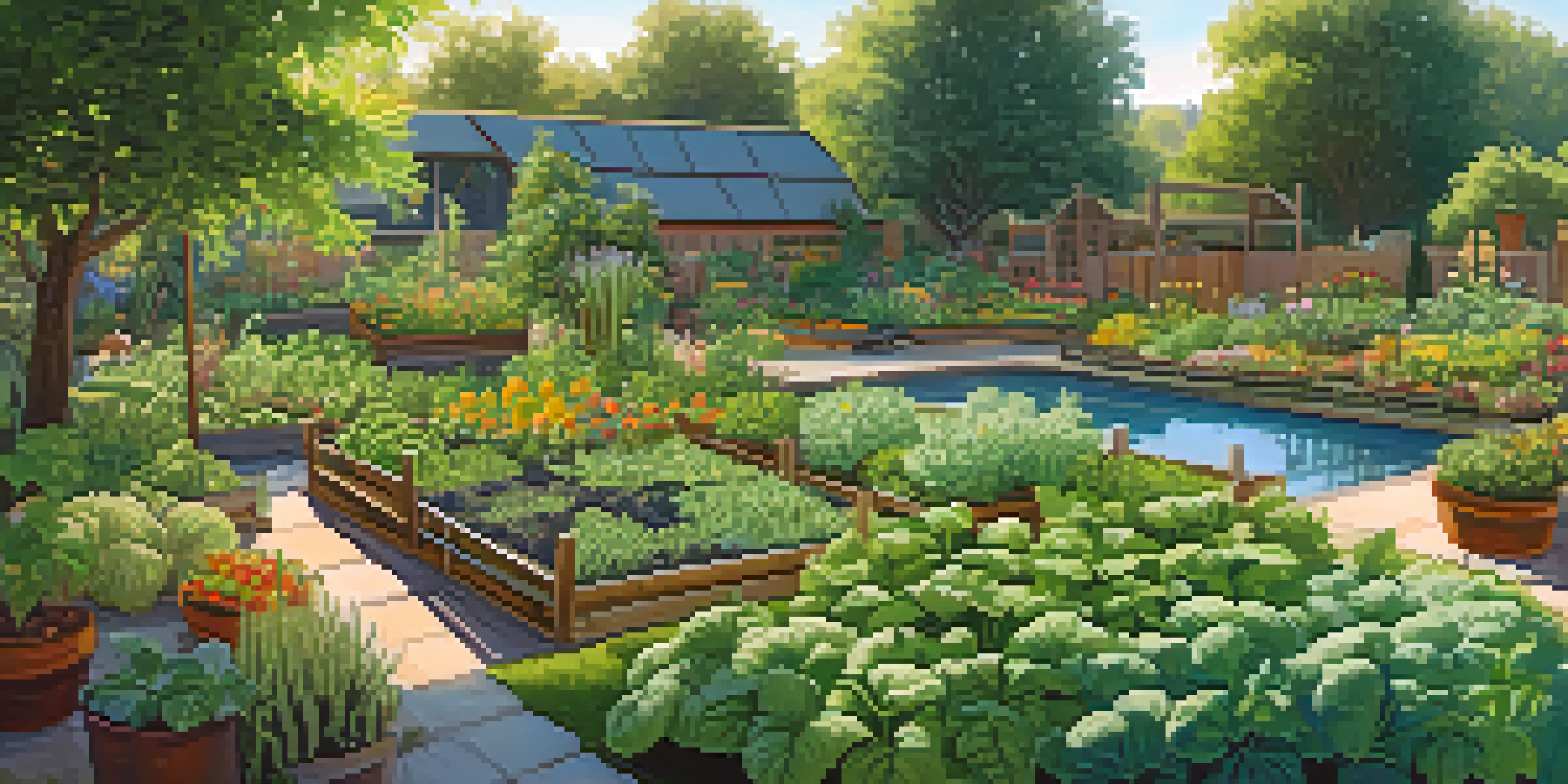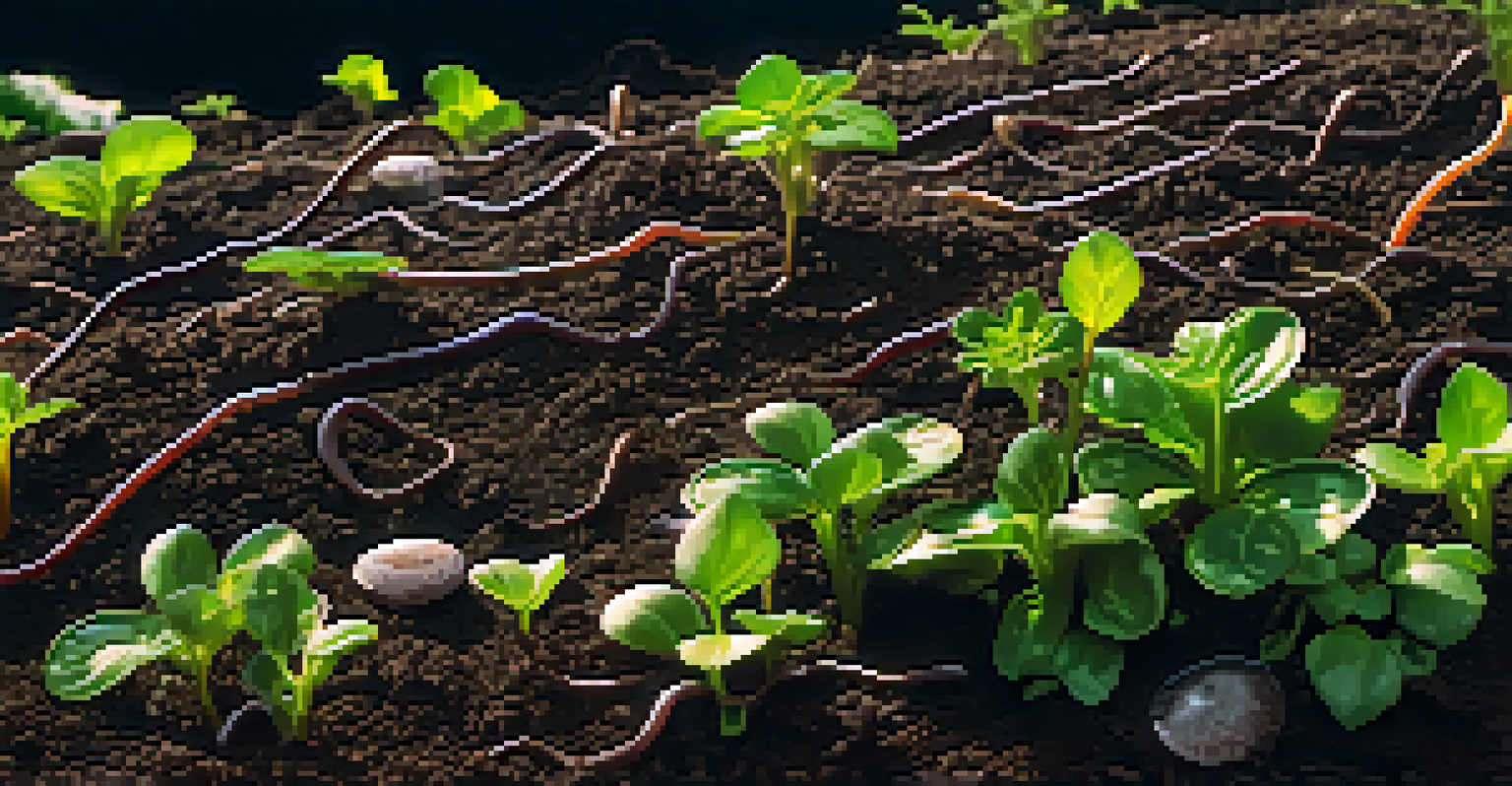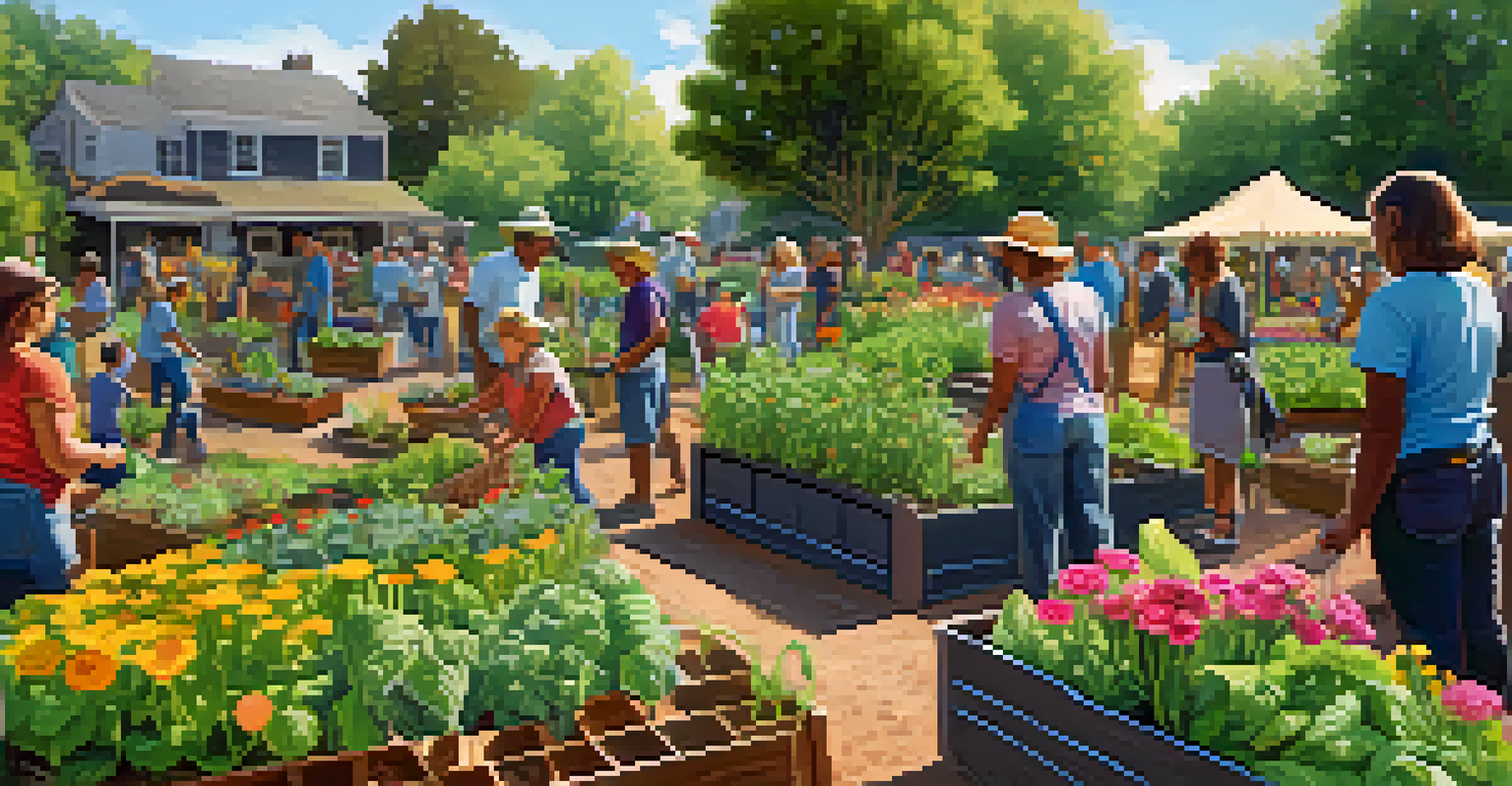Permaculture Principles: Designing for Sustainable Food Systems

Understanding Permaculture: A Holistic Approach to Farming
Permaculture is more than just a gardening method; it's a philosophy that encourages sustainable living. By observing natural ecosystems, we can create food systems that work in harmony with the environment. This holistic approach focuses on the interconnections between plants, animals, and humans, making it a powerful tool for sustainable agriculture.
The greatest threat to our planet is the belief that someone else will save it.
At its core, permaculture seeks to mimic the relationships found in nature. For instance, just as forests thrive through diverse plant life, permaculture gardens encourage biodiversity, leading to healthier soil and more resilient crops. This emphasis on ecological balance helps to reduce the need for chemical fertilizers and pesticides.
Ultimately, embracing permaculture principles allows us to cultivate not only food but also a deeper connection to the land. By understanding and respecting natural processes, we can promote a sustainable lifestyle that benefits both current and future generations.
Observation: The First Step in Permaculture Design
Observation is the foundation of effective permaculture design. Before planting, take time to study your environment—its climate, soil, and existing flora and fauna. Understanding these elements allows you to tailor your design to fit the unique conditions of your site, ensuring a more productive and sustainable system.

For example, observing how water flows through your land can inform decisions about where to place swales or ponds. These features help to manage water runoff, prevent erosion, and create microclimates that benefit plant growth. By taking a step back and observing, you can make informed choices that enhance the resilience of your food system.
Permaculture: A Sustainable Philosophy
Permaculture is a holistic approach that mimics natural ecosystems to create sustainable food systems and foster a deeper connection to the land.
Remember, the goal is not to impose your will on nature, but to work with it. This mindful approach fosters a deeper relationship with the land, encouraging a sustainable cycle of growth and renewal.
Zoning: Organizing Space for Maximum Efficiency
Zoning is a key principle in permaculture that involves strategically organizing land based on how often different areas will be used. This helps to create efficient systems that minimize energy expenditure and maximize productivity. For instance, your herb garden, which requires frequent access, should be closer to your kitchen than your orchard.
We do not inherit the earth from our ancestors; we borrow it from our children.
By arranging your garden in zones, you can reduce unnecessary trips and make better use of your time and energy. Imagine a well-designed kitchen where everything you need is within arm’s reach; the same concept applies to permaculture design. This thoughtful layout allows you to cultivate your food systems in a way that feels effortless.
Additionally, zoning encourages thoughtful interaction with your environment. As you move through the zones, you’ll notice how different plants and animals thrive in specific areas, leading to more harmonious relationships within your ecosystem.
Companion Planting: Boosting Growth and Biodiversity
Companion planting is a practice where certain plants are grown together to enhance growth and deter pests. This principle takes advantage of the natural relationships between plants, creating a balanced ecosystem. For instance, planting basil alongside tomatoes can improve flavor and repel harmful insects, making both plants healthier.
The beauty of companion planting lies in its simplicity and effectiveness. By understanding how plants interact, you can create a diverse garden that supports itself. For example, legumes fix nitrogen in the soil, benefiting neighboring plants that require this essential nutrient.
Water Management Enhances Resilience
Effective water management techniques, like swales and rainwater harvesting, are crucial for ensuring plant health and conserving resources in permaculture.
This approach not only promotes plant health but also fosters biodiversity. A diverse garden attracts beneficial insects and wildlife, creating a vibrant ecosystem that thrives without the need for synthetic chemicals.
Soil Health: The Foundation of Sustainable Food Systems
Healthy soil is the backbone of any successful permaculture system. It provides essential nutrients, supports plant growth, and fosters a thriving ecosystem of microorganisms. To build soil health, focus on practices like composting, mulching, and crop rotation, which all contribute to a rich, living soil structure.
For example, adding organic matter like compost improves soil fertility and enhances its ability to retain moisture. This is particularly important in areas prone to drought, where healthy soil can make the difference between a bountiful harvest and a failed crop. The more living organisms in the soil, the better it can support plants and resist pests.
Investing time and resources into soil health pays off in the long run. Healthy soil leads to strong plants, which in turn leads to greater yields, creating a sustainable food system that nourishes both people and the planet.
Water Management: Essential for Sustainable Growth
Water management is a critical aspect of permaculture design. Efficiently using water resources can drastically improve the sustainability of your food system. Techniques like rainwater harvesting, swales, and drip irrigation help to capture and conserve water, ensuring that your plants receive the moisture they need without waste.
For instance, swales are shallow trenches that direct water flow and promote infiltration, reducing runoff and erosion. By slowing down and spreading water across the landscape, swales help to nourish plants and create a more resilient ecosystem. This concept mirrors natural systems, where water is absorbed and utilized effectively.
Community: The Heart of Permaculture
Building community through shared knowledge and practices strengthens local food systems and promotes sustainable living for future generations.
Incorporating water management techniques not only conserves this precious resource but also enhances the overall health of your garden. A well-designed system ensures that your plants thrive, even during dry spells, contributing to a more sustainable and productive food system.
Community and Education: Growing Together for a Sustainable Future
Permaculture is not just about individual gardens; it's also about building a community around sustainable practices. Sharing knowledge, resources, and experiences fosters a sense of belonging and encourages collective action towards a healthier planet. By working together, communities can create more resilient food systems that benefit everyone.
Participating in community gardens, workshops, and local food initiatives helps to spread the principles of permaculture. These platforms allow individuals to learn from each other and experiment with different techniques, ultimately strengthening the local food network. The more we engage with our communities, the more resilient our food systems become.

Education plays a pivotal role in this process. By teaching others about permaculture principles and practices, we can inspire a new generation of environmentally-conscious individuals who are passionate about sustainable living. Together, we can cultivate a future where food systems nourish not just our bodies but also the earth.